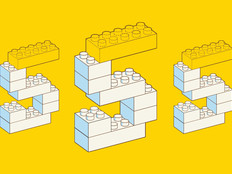Dark Fiber Delivers for Columbia College Chicago
Film students need bandwidth — and plenty of it. That's why the ability to access and exchange digital files lies at the heart of the mission at Columbia College Chicago, one of the largest private colleges for arts and media in the United States and a prolific film school.
From their first semester at the college, students in almost all majors tackle hands-on projects that produce audio, video and multimedia files that are shared, reviewed and edited by peers and professors. Those files commonly approach 1 gigabyte in size each.
To handle the load, the college deployed a dark fiber system from Sidera Networks that delivers a tenfold increase in bandwidth compared with the aging and inconsistent network it replaced. With 10 miles of fiber-optic cable in downtown Chicago, Sidera's dark fiber network has the capacity to let the college easily add bandwidth as its requirements expand.
"We've got to keep our infrastructure at the level our students need," says Bernadette McMahon, associate vice president and CIO. "It's not just important for the media arts courses. All the students benefit, along with the faculty and administration."
Columbia College Chicago serves nearly 12,000 students on a campus that sprawls through the city's South Loop, with some of its buildings almost two miles apart. Until this spring, the college's buildings were connected to the Internet by an assortment of local telecom providers and ISPs, which often delivered limited connectivity at varying speeds, says Richard Piotrowski, the college's director of infrastructure services.
"Some connections had Gigabit speeds, and some only had T1 speeds," he says. "It restricted data flow throughout the network. The arrangement also meant we needed extra networking equipment — more firewalls and extra management tools, along with a lot more edge equipment for security."
The Right Solution
Over the past couple of years, Piotrowski says the college's IT staff had periodically talked about the need for a stronger telecom network, but had never really decided on a comprehensive solution. The college did contract with a multiprotocol label-switching (MPLS) provider to streamline the delivery of administrative systems from a central server farm to core campus buildings. But limited speeds in and out of each building made it nearly impossible to create a central repository for resources and services, Piotrowski says. The old network also had no redundancy, making it vulnerable to outages.
In the fall of last year, McMahon and her staff turned to CDW•G to find the most effective way to improve the college's network. With business relationships at 70 different carriers, CDW's Telecommunications Services unit offered a clear explanation of the available options and pointed the college toward Sidera's dark fiber network.
"The college's network wasn't meeting their demand, and we wanted to fill the need for high-capacity bandwidth, as well as give them the ability to control data on the network themselves," says CDW•G Telecommunications Specialist Matt Rozhon.
"With dark fiber, they can parcel off bandwidth. They can start at 1 Gigabit and go to 10 Gigabit speeds and beyond, which gives them the ability to grow in the short and long term," he says.
68% The percentage of institutions that offer students unlimited connectivity to the residential network
SOURCE: 2012 ACUTA State of ResNet Report (Association of Information Communications Technology Professionals in Higher Education, March 2012)
Planning the Overhaul
After comparing dark fiber with other options, the college chose Sidera and began planning the network overhaul in November 2011. Sidera had fiber-optic cable with unused capacity in place beneath the streets of the city, but implementing the solution at the college was quite a challenge. Municipal permits were required to dig under the city streets to complete connections to 19 campus buildings. Most of that work was done at night and on weekends to limit disruptions for students and staff, says Piotrowski. Once the Sidera construction crew, working with the college's IT staff, had penetrated each building with fiber-optic cabling, the strands were carefully routed to individual server rooms.
"There was an enormous amount of planning before we began to map out the best pathways for the wiring," says Piotrowski. "Then there were a lot of late nights executing the plan."
The college's dark fiber infrastructure was configured in a ring, with each building having separate direct connections to the optical cable and to other campus locations. The ring architecture delivers built-in redundancy, with automatic failover if the network goes down in one location, ensuring that the building and the rest of the campus will retain access to applications and computing resources, says Piotrowski.
To take full advantage of the fiber, the college needed to upgrade its networking equipment. After more research, the IT staff selected hardware and software from Cisco Systems, including Cisco's Nexus switches. The college IT team installed and tested the new networking gear connected to the dark fiber ring before it began the migration of services from the old network, Piotrowski says.
The first round of the migration focused on the administrative services that were running on the MPLS network. This first step required a period of coexistence, with services maintained by the old network as the IT staff carefully rerouted connections to the new infrastructure. By March, the migration of the administrative network was complete.
"From the standpoint of getting all of the new equipment online, we've taken the existing networking in each building and connected it to the new configuration, with no disruption to any services," he says.
The student network migration was complicated by the variety of connections into various campus buildings — those portions of the network had never been unified by the MPLS system. The IT team created connections into the fiber ring while simultaneously disconnecting individual buildings from their separate ISPs. Work on the student network is scheduled for completion this summer.
Return on Investment
The improved connectivity has made a major difference for students and faculty at Columbia College Chicago. "When the college gets that big fiber ring, it helps us extend the potential of everything we do as an institution," says David Gerding, associate professor of interactive arts and media.
Gerding has already seen the benefits of the dark fiber infrastructure. Although the new network was just going online at the time, student journalists used the increased bandwidth of the new network to stream video of protests surrounding the NATO summit this past May.
"We were able to partition off parts of the bandwidth for reporters in the crowd and know we also had plenty of bandwidth for the high-density camera feed on the roof of one of our buildings," Gerding says. "It gives us freedom and flexibility we never had before."
For an educational institution, the most important return on investment is an increase in capabilities for students and professors. But the project will also deliver substantial budgetary benefits to the college, says McMahon.
"We will fully recoup the cost of the project in three years through savings from what the college was paying for its old infrastructure and telecommunications costs," she says. "After that, we'll get a financial return, along with the benefits of the increased bandwidth and reliability of the network."
For other institutions considering a dark fiber solution, Piotrowski stresses the importance of creating the ring architecture. From a technical standpoint, McMahon agrees that increased resiliency and bandwidth are very important. She also advises close attention to the details of provider agreements and the scope of the project.
"As with any major investment, you have to watch pricing carefully and look for hidden costs — you're paying for the fiber and for all the services to complete the connection and create the new infrastructure," she says. "A really detailed contract review is in order."
Gateway to the Future
The dark fiber ring does more than solve Columbia College Chicago's challenges with limited bandwidth and unreliable connectivity — it offers a foundation for future IT and academic projects.
"The need to move big data isn't going away. It's growing, and we needed the infrastructure to handle it," says Richard Piotrowski, director of infrastructure services.
When Matt Rozhon of CDW•G's Telecommunications Services recommended the Sidera Networks dark fiber solution to Columbia College Chicago, he was looking beyond the college's immediate bandwidth requirements.
"This solution means that the college can realistically start thinking about cloud solutions or collocation for disaster recovery on the IT side," he says. "On the academic side, it opens up possibilities for more online offerings to students and a better connection to Internet2."
Colleges depend on bandwidth today, says David Gerding, associate professor of interactive arts and media.
"If higher education is going to stay relevant, we have to be innovative," says Gerding. "We can't simply teach the tools and techniques that are already out there, we have to be inventing them. Big bandwidth is a way to sample the future from a development standpoint — you can take 20 video streams and connect them and explore what you can do with them. Fiber bandwidth is a gateway, a way to walk around in a semblance of the future."







